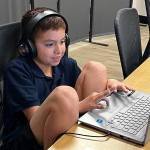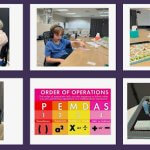How Inclusive Education Benefits Every Student
In recent years, more families and educators have started to recognize that inclusive schools benefit every type of learner. A truly inclusive classroom is not just about integrating students with different needs—it is about creating an environment where every child, regardless of how they think or learn, feels seen, respected, and challenged to grow. At Embrace Academy, a private school in Las Vegas, that philosophy is at the center of everything they do.
How Inclusion Helps Neurotypical Students
When neurotypical students learn in inclusive classrooms, they gain more than academic knowledge. They learn empathy, patience, and an appreciation for the differences that make people unique. Being surrounded by peers who think and process information in different ways teaches compassion at a young age. Instead of seeing those differences as barriers, students start to see them as part of what makes a community stronger.
In a classroom where everyone learns differently, collaboration becomes essential. Group projects and discussions encourage teamwork and problem-solving, allowing students to discover how to use one another’s strengths. One student might have an eye for detail, another might be creative with ideas, and another might bring calm focus when things get stressful. Working together helps students realize that success rarely happens alone.
These experiences also prepare children for the real world. Most professional environments depend on teamwork, communication, and flexibility. When students grow up practicing these skills daily, they are better equipped to adapt and collaborate later in life.
Another important advantage for neurotypical learners is exposure to creative teaching methods. Inclusive education requires flexibility. Teachers often use a mix of visual, auditory, and hands-on learning strategies to meet the needs of all students. That variety helps everyone. Students are shown multiple ways to solve problems, think critically, and approach challenges. It broadens their perspective, helps them retain information more effectively, and builds an appreciation for how learning can take many forms.
How Inclusion Empowers Neurodiverse Students
For neurodiverse students, inclusive education can be life-changing. When students are part of the general education classroom, they gain access to the same curriculum as their peers, ensuring they have the opportunity to reach their full academic potential. Supportive accommodations, such as sensory tools, modified lessons, or additional time, make that access meaningful rather than symbolic.
Beyond academics, inclusion helps neurodiverse students develop stronger social skills. They interact with peers every day, learning how to communicate, cooperate, and build friendships. These daily experiences create natural opportunities to practice empathy, conversation, and teamwork in ways that cannot happen in isolated or self-contained environments.
Over time, this inclusion builds confidence. When a student feels part of their classroom instead of separate from it, their sense of belonging grows. They begin to see themselves not as someone who is different, but as someone who contributes in their own way. That sense of pride leads to better self-esteem, which in turn fuels motivation and engagement in learning.
The confidence that comes from inclusion extends beyond the classroom, too. When children know that their ideas and efforts matter, they carry that belief into every part of their lives—whether in sports, friendships, or future workplaces.
The Shared Impact of Inclusive Education
The beauty of inclusion is that it benefits everyone. Neurotypical students gain perspective and empathy, while neurodiverse students gain access, confidence, and connection. When students learn in the same space and face challenges together, they see firsthand that intelligence, creativity, and problem-solving do not look the same in every person. They learn that diversity is not something to manage—it is something to celebrate.
Teachers in inclusive schools also grow through this approach. They become more adaptable, more patient, and more creative in how they reach every learner. Lessons become dynamic, classrooms become collaborative, and school becomes a place of shared growth.
In this kind of environment, the differences between students are not barriers to success. They are the foundation of it.
Embrace Academy’s Commitment to Inclusion
At Embrace Academy, the mission is to ensure that every student—whether neurotypical or neurodiverse—feels valued, supported, and capable of success. The school is intentional about designing classrooms that reflect real-world diversity. Lessons are personalized, teaching strategies are flexible, and expectations remain high for every learner.
Teachers are encouraged to adapt their methods to match each student’s strengths, providing both structure and creativity. Whether a child needs additional support or extra challenge, the goal is always the same: to help every student reach their fullest potential.
Embrace Academy believes that inclusion is not just a policy—it is a mindset. It is about teaching students to respect differences, celebrate strengths, and work together toward shared goals. When classrooms become places of acceptance, learning becomes more than memorizing facts. It becomes a community where every child can grow, lead, and belong.
Embrace Academy
10100 Banburry Cross Drive
Las Vegas, NV 89144
Phone: (702) 990-5437



